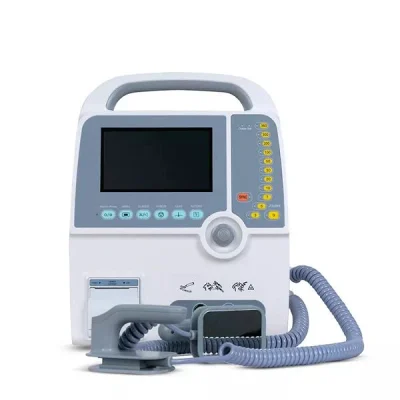Project Report For Defibrillators
Introduction
Project Report For Defibrillators is as follows.
A defibrillator is a machine that shocks the heart with electrical energy. The purpose of utilising a defibrillator is to treat cardiac arrest. This is usually necessary when a patient has ventricular fibrillation or ventricular tachycardia, which are life-threatening arrhythmias that happen when the ventricles contract abnormally. ECG leads and sticky patches (or paddles) are features of defibrillators. The adhesive electrodes are the patches put on the patient’s chest that provide the electric shock.
In addition to monitoring the patient’s pulse and providing shocks as needed, advanced life support defibrillators monitor the patient’s blood pressure, carbon monoxide levels, and other crucial medical data. ALS defibrillators stabilise the patient’s condition by frequently providing shocks to keep the patient’s heart beating. As a result, their odds of making it to the hospital alive are greatly improved.
There is evidence to support the use of defibrillators in the treatment of arrhythmias and in the preservation of life. A number of types of arrhythmias, including ventricular fibrillation (VF) and pulseless ventricular tachycardia (VT), have been shown to significantly increase the chances of survival for patients who receive early defibrillation.

Types of Defibrillators
Defibrillators come in a variety of varieties nowadays. These include wearable cardiac defibrillators, automated external defibrillators, manual internal defibrillators, automated external defibrillators (AEDs), and implanted cardioverter-defibrillators (ICDs).
Manual external defibrillator :- For proper operation of these defibrillators, more knowledge and training are needed. As a result, they are only typical in medical facilities like hospitals and a few ambulances with experienced drivers. Using an ECG and the heart rhythm determined by the trained professional, external paddles are used to deliver a shock to the patient’s chest at the appropriate voltage and time.
Implantable cardioverter-defibrillator :- This is sometimes referred to as an AICD, or automated internal cardiac defibrillator. Similar to a pacemaker, they continuously monitor the patient’s heart and can identify ventricular fibrillation, ventricular tachycardia, supraventricular tachycardia, and atrial fibrillation. The apparatus chooses the shock voltage automatically to restore heart function when an aberrant rhythm is found.
Automated external defibrillator (AED) :- These are defibrillators that use computer technology, thereby making it easy to analyze the heart’s rhythm and effectively determine if the rhythm is shockable. They can be found in medical facilities, government offices, airports, hotels, sports stadiums, and schools.
Get Completely Custom Bankable Project Report
Market Potential of Defibrillators
The market for defibrillators was estimated at USD 13.69 billion globally in 2022 and increased at a CAGR of 8.47% between 2023 and 2032. By 2032, the market is projected to reach a value of USD 30.88 billion.
The development of next-generation defibrillators is expected to lead to a faster than expected expansion of the defibrillator market. Defibrillators on the market aid in locating and fixing device-related issues. The most frequent cause of mortality globally is SCA, which can be deadly. With prompt treatment and defibrillation, this condition can be controlled.
Due to the growing number of heart failure patients utilising them, AEDs are now the most widely used external defibrillators on the market and are anticipated to grow at the fastest pace over the next few years. The availability of additional AEDs coincided with an increase in demand. Currently, wearables outperform manual external defibrillators. S-ICDs, MRI-compatible ICDs, and CRT-Ds may all contribute to the market’s rise in the next few years.
The market for public access defibrillators (PADs) is growing as more public and private entities become interested in them. The rapidly ageing population with a higher risk of cardiac arrest, as well as the rising prevalence of heart disease, are also driving the market. continue to fuel the growth of Cardioversion, defibrillation, and cardiac pacing can all be accomplished utilising defibrillators. AEDs are used to treat sudden cardiac arrest (SCA), and they have a substantial market share because to their high efficiency and usability.

